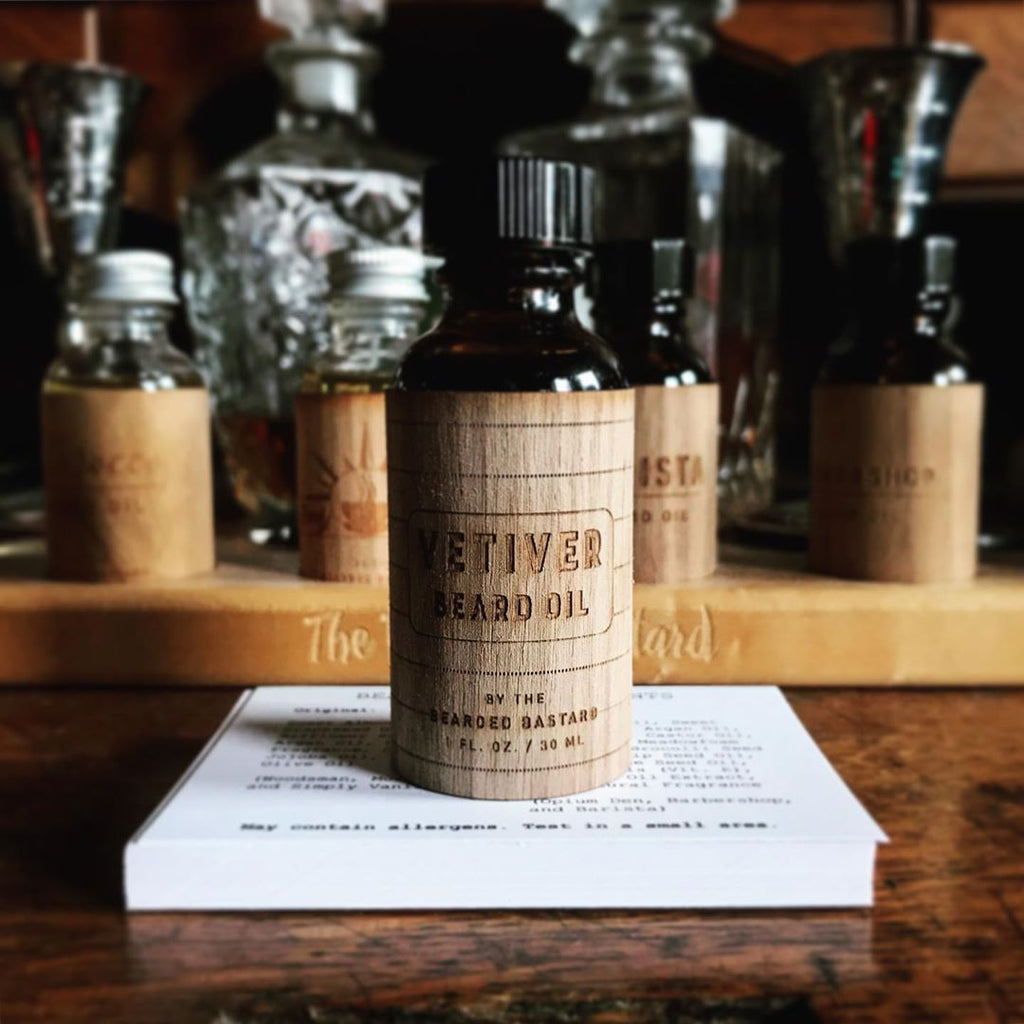Getting Some New Bearded Knowledge About Non-Comedogenic Oils

As you have probably learned by now, one of the most important things that you can do to maintain the health and appearance of your beard is to apply a high-quality beard oil each day. Facial hair is more naturally prone to dryness than the hair on our head. Providing adequate moisture and nourishment is absolutely crucial to growing and maintaining healthy hair and skin.
Now, that sounds easy enough, until you consider the fact that there are countless beard oil products on the market today, each produced by a different manufacturer and each promising to transform a guy’s beard with the best ingredients out there. As you would imagine, the truth is that not all beard oils are created equally, as some are far better suited for your face and facial hair than others.
So, what makes one beard oil better than another? It all comes down to the ingredients. When we are talking about beard oil, the ingredients that we refer to are the oils themselves. There are countless oils that are derived from nature, and some are more beneficial and suitable for a guy’s skin than others.
As you’re about to learn, oils fall into one of two categories: comedogenic and non-comedogenic. To put it simply, you want to avoid comedogenic oils at all costs, and now you’ll find out why.
What are Comedogenic Oils?
Comedogenic oils are oils that are likely to clog your skin pores When a pore is clogged with oil, it becomes very prone to infection, which causes skin congestion to occur. This is because what is inside of the pore can no longer make its way out. The pore then becomes a breeding ground for the bacteria that’s responsible for acne. Clogged pores typically manifest in one of three different ways: pimples, blackheads or comedones, which are flesh-colored bumps that appear on the surface of the skin.
What Makes an Oil Comedogenic?
An oil’s comedogenic value is determined by its consistency, as the consistency is what dictates how likely it is that the coil will clog the pore. Now, one thing that is a bit complicated about comedogenic oils is that some people will react more harshly to them than others. This is due to the fact that we all have a unique skin type, and so some of us are more prone to breakouts than others.
Luckily, there’s an easy way to figure out how likely a particular oil will lead to clogged pores, and it’s known as the comedogenic scale. This scale was first developed by dermatologists as a way to determine the comedogenic nature of a particular oil as objectively as possible. Basically, all plant oils are rated on a scale of zero to five, with five indicating the highest likelihood of clogging pores. Oils that are rated zero have basically no chance at all of clogging pores.
Examples of Comedogenic Oils
So, what are some examples of comedogenic oils? Well, let’s look at the ones that are most commonly found in skincare and beard products. All of these oils have a high rating on the comedogenic scale.
Coconut Oil
Coconut oil may be renowned for its plethora of unique benefits, but that doesn’t mean that it necessarily should be applied to your face on a daily basis. In fact, this coconut-derived ingredient is one of the most comedogenic oils that there is.
Wheat Germ Oil
Wheat germ oil also has a reputation for being highly comedogenic, boasting a five on the comedogenic scale. Germ oil is extracted from wheat kernels, and while it’s very nutritious when consumed as a food item, it’s best to avoid, especially if you’re already prone to breakouts.
Flaxseed Oil
Flaxseed oil has a rating of four, which means that if you already struggle with breakouts, you should avoid it in skincare products as well as beard care products. Despite its unique variety of nutrients, its potential to clog pores is simply not worth it.
Soybean Oil
Soybean oil is another highly comedogenic oil, and it’s also frequently used as a cheap filler ingredient.
The Bearded Bastard: Only the Finest, Non-Comedogenic Oils
At The Bearded Bastard, we go out of our way to source only non-comedogenic oils that don’t just prevent clogged pores, but also provide the skin and facial hair with nutrients and plant properties that can be highly beneficial. Allow us to break down some of the non-comedogenic oils that we use in our formulas.
Jojoba Oil
Jojoba oil is a highly nourishing oil renowned for providing ample amounts of moisture to the skin, while reducing irritation.
Grapeseed Oil
Grapeseed oil doesn’t just hydrate the skin and facial hair, but offers anti-inflammatory properties as well. Grapeseed oil is also commonly used on scars, as it can speed up the healing process of the skin.
Sweet Almond Oil
Sweet almond is yet another highly moisturizing, non-comedogenic oil that’s uniquely rich in vitamin E, making it capable of healing the skin as well. Additionally, sweet almond oil can boost circulation to the area, which is great for those who want to improve their beard growth game.
Castor Oil
Castor oil doesn’t just moisturize the skin, but it cleanses it as well. Its antibacterial properties make it popular among those who struggle with acne. It’s also high in antioxidants which may have a positive impact on aging skin.
Argan Oil
Argan oil is one of the most moisturizing oils in existence, being capable of plumping skin cells deep beneath the surface. Some dermatologists believe that argan oil has some pretty impressive anti-aging properties as well. And, it may help combat dermatitis.
Olive Oil
Olive oil has been used for skincare purposes for thousands of years, because in addition to being profoundly moisturizing, it’s rich in both antioxidants and vitamin E which can have long-lasting benefits for your skin.
Safflower Oil
Besides providing a ton of much-needed moisture to the beard and skin, safflower oil offers its amazing anti-inflammatory properties as well as its irritation-soothing superpowers.
Final Thoughts on Beard Oil Ingredients
Comedogenic oils are found in a large number of popular beard oil products, despite the fact that they can seriously wreak havoc on your skin. Now that you have this guide, you can easily refer to it when looking through the list of ingredients on the back of a beard oil product. And, if you want to make things easy for yourself, simply opt for the non-comedogenic formulas from TBB.
Still not sure which product is right for you?
Try our informative quiz to see which products are best suited for your beard goals!

Leave a comment